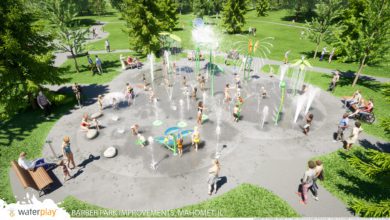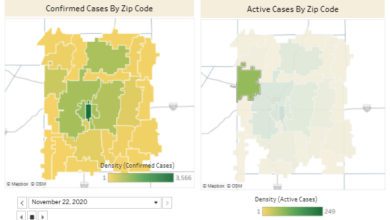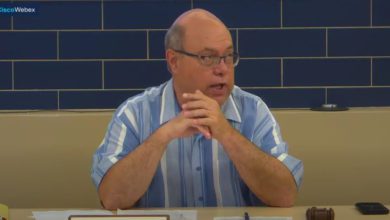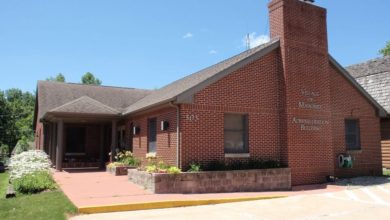After rare diagnoses, Make-A-Wish gives Bailey Nunn hope

By FRED KRONER
The first telltale sign was an insatiable thirst for water.
When Mahomet teen-ager Bailey Nunn’s craving didn’t pass, his mom scheduled an appointment with his pediatrician.
“It was very extreme,” Tonya Nunn said. “He would wake up multiple times through the night because he was so thirsty.”
It was more than 17 months ago that Nunn – now a senior at Mahomet-Seymour High School – embarked on a journey which has at least eight more months to go.
The family didn’t get any immediate clear-cut answers.
“His pediatrician ran several tests and couldn’t quite figure it out, and referred us to a pediatric endocrinologist at OSF in Peoria,” Tonya Nunn said.
Through the first half of Bailey Nunn’s sophomore year in 2018-19, there was no foreshadowing as to what would transpire in the days ahead.
He had no medical issues.
He enjoyed playing PC games, walking or hanging out with Petie, an 80-pound rescue Pit Bull mix, or his older brother Brody, a junior at the University of Illinois.
***
Even before the coronavirus pandemic changed the face of education in America, Bailey Nunn’s in-person learning was becoming limited.
“In May of 2019, Bailey was diagnosed with a rare and complicated disorder called Langerhans Cell Histiocytosis (LCH),” Tonya Nunn said. “Langerhans cells are a type of white blood cell that normally help the body fight infection.
“In LCH, too many Langerhans cells are produced and build up in certain parts of the body where they can form tumors. Bailey’s LCH was found on his pituitary gland through an MRI.
“Diagnosing him was very hard due to the location of the cells (a biopsy could not be performed), so Bailey endured multiple tests and procedures the following weeks for confirmation.”
As the school semester neared an end, the tests that Bailey Nunn had prominently on his mind weren’t concerning his classes at school.
“It was close to finals, but we were in the process of not really knowing what was going on with Bailey and he was having (medical) tests performed almost daily,” Tonya Nunn said. “The school district was very considerate of Bailey’s condition.
“They knew we were in a very scary moment, the district and his teachers were concerned and let him finish his school year early, since we only had a couple of weeks left.”
Tonya Nunn was grateful for the compassion shown by the teachers and administration.
“It was a very scary and chaotic time for us,” she said. “That was somewhat relieving, I didn’t want to put that burden on him as well.”
She had good reason for those feelings. While the news was encouraging on the educational front, not everything was as promising from the medical standpoint.
At the same time one rare disorder was diagnosed (LCH), a second one was also discovered.
“Unfortunately, the LCH caused damage to his pituitary gland, which created another condition. He has Diabetes Insipidus (DI),” Tonya Nunn said. “DI is another rare disorder which causes an imbalance of fluids in the body and is treated with medication.”
***
Though it seems unthinkable, the double diagnosis resulted in a silver lining.
“The DI symptoms are what caused us to pursue further testing for Bailey,” Tonya Nunn said. “Without those symptoms, the LCH could have lingered around a lot longer and caused further complications for him.”
The Diabetes Insipidus was confirmed after Bailey Nunn’s first MRI results were available, which explained the extreme thirst.
That meant the need to take medication the rest of his life to treat the DI, but as Tonya Nunn explained, “this was the least of our worries.
“The real issue was the cells on his pituitary that damaged it and caused the Diabetes Insipidus. They suspected LCH (Langerhans Cell Histiocytosis) right away, but we had to go through multiple procedures and tests to confirm.”
Those tests helped to change the outlook for Bailey Nunn’s future.
“Bailey and I often talk about how the LCH damaging his pituitary gland and causing the DI, is what really saved him,” Tonya Nunn said. “It gave him symptoms that something wasn’t right, else the LCH cells could have lingered around a lot longer.
“If the LCH had continued, it could have caused even more damage to his pituitary or even went elsewhere in his body. LCH is complicated and can reside in multiple places, organs, bones, skin, bone marrow, etc.”
Fortunately for Bailey Nunn, he had only the single-system LCH, not multi-system. The survival rate is very high.
***
By the time a new school year started in August, 2019 – Bailey Nunn’s junior year – he had also started his treatments.
“He was able to return (to school) his junior year but it was a little difficult,” Tonya Nunn said. “He missed a lot of school due to appointments and simply not feeling well.”
When school was shut down in March (2020), Tonya Nunn said the educational decisions that followed were not an issue for Bailey.
“Remote learning has worked out well for him since it allows him to concentrate on schoolwork when he is feeling well,” she said.
The passage of time has also helped Tonya Nunn open up and discuss her son’s condition.
“It has been over a year, and I now feel like I can finally talk about it,” she said.
***
The myriad of the doctor’s appointments have been in Peoria, where Bailey Nunn will often see an oncologist at the St. Jude affiliate there who resides within OSF.
For the most part, Tonya Nunn said her son has handled his situation very well.
“Bailey has been very positive in regards to everything,” she said. “His diagnosis, his treatment, he never complains.
“One time I really noticed his demeanor sadden, is when he found out he would be on the chemo medication for at least two years. He had anticipated a year. He was also upset when his hair started to thin, but thankfully reducing the dose resolved that issue.”
The family has been cautious about Bailey’s interactions during the coronavirus pandemic.
He not only is learning remotely as a senior, but also has limited contacts.
“We have been very careful with Bailey,” Tonya Nunn said. “He is only allowed to visit with a couple of friends and he doesn’t go out in public.
“When the virus first came about, we did remote doctor visits and only scheduled (in-person) doctor visits that were absolutely necessary.”
It was through his affiliation with St. Jude as a patient that he was nominated by them for the Make-A-Wish program, which grants wishes to children with life threatening illnesses.
Tonya Nunn said when word was received about the Make-A-Wish, it arrived at the ideal time.
“The news was very exciting and honestly brought him hope and happiness that I hadn’t seen in a long time,” she said. “Because of the restrictions placed on Bailey, he had taken a great interest in the outdoors.
“He got a mountain bike for his birthday and decided for his wish, he’d like a camper.”



***
Curt Homann and Renea Saltsgaver were the two wish-granters who volunteered to help Bailey. Both were first-time wish-granters,
“We initially met to go over Bailey’s interests in January,” Tonya Nunn said, “then things got delayed with the virus. But once Bailey decided on a camper, the process went very quickly.”
On Saturday, Sept. 26, the camper arrived at the Nunn’s rural Mahomet residence.
“His total wish journey took approximately 10 to 12 months from application to fulfillment,” Homann said.
Though he knew that he was approved for the camper, Bailey Nunn wasn’t given a timetable.
“We were actually able to surprise him,” Tonya Nunn said. “Bailey’s dad (Marty) picked up the camper from Camping World that morning.
“We coordinated with Bailey’s best friend to pick him up that afternoon for a bit. Once the camper arrived, I quickly decorated it and had Bailey return home. We had immediate family and the wish-granters waiting for him.
“He was definitely surprised,” Tonya Nunn added. “We were able to keep it a secret and he had no idea. He was very thrilled and excited that his wish finally came true.”
Homann enjoyed being present when Bailey Nunn’s Make-A-Wish request came to fruition.
“Bailey is a pretty shy kid, so his reaction was fairly subdued,” Homann said, “but he had a huge smile on his face all afternoon as he saw the camper in his driveway. You could certainly see his excitement and the happiness of his family.”
Bailey Nunn has not yet traveled with the camper, but he has already put it to good use.
“He’s been able to camp out in his backyard several times and really enjoys it,” Tonya Nunn said. “I have to say the wish process really helped. It gave him something positive to focus on and look forward to.”
For Homann, his involvement with Make-A-Wish is personal.
“From a personal perspective, our youngest daughter was a wish recipient approximately 15 years ago,” Homann said. “It was such an important gift of joy during many challenging years of treatments and extreme emotional ups and downs.
“For me, being a small part of another child’s wish journey was important as I truly understand how important and needed this wish and the joy it brings is. It was an honor to be a small part of Bailey’s wish journey and was a great feeling to see his joy.
“He is a great, respectful young man and he and his family were great to get to know and work with.”
***
Bailey Nunn, 17, has learned to cope with the direction life has taken him in the last year and a half.
“Being diagnosed with something so rare was scary at first, not knowing how lethal it could be,” Bailey Nunn said. “However, I had faith in the doctors, and as we realized the medicine was starting to work and that I would be OK, I felt much more at ease.”
He is appreciative of the camper that was gifted through Make-A-Wish.
“It was so amazing to be able to get something back out of it,” Bailey Nunn said, “and even though going through all this hasn’t been fun, it was very great to end on a good note by getting the camper.”
From the beginning, the family has served as their own advocates. The line of treatment that Bailey Nunn is receiving came after they sought additional consultation.
“The ‘standard’ treatment for LCH is a year of IV chemotherapy along with steroids,” Tonya Nunn said. “However, when Bailey was diagnosed, we reached out to others to get a second opinion and came across a team of doctors at Cincinnati Children’s hospital who specialize in Bailey’s condition.
“They highly recommended going with a new treatment protocol they had very good results with. There wasn’t a lot of data, so it was a difficult choice, but we decided to try this route as it had less long-term effects.”
The teen-ager takes an oral chemotherapy drug which he has to have every day at home.
“We had to lower the dose after the first three months as it was too harsh for his body and the side effects were too extreme,” Tonya Nunn said. “He’s doing a lot better on the lower dose he’s currently taking.”
Test results have been encouraging.
“Bailey is doing very well,” Tonya Nunn said. “The treatment has worked and he is currently in ‘maintenance mode,’ which is necessary to keep the LCH from reoccurring.
“We received confirmation that the LCH cells were gone through an MRI two months after he started treatment. We are very grateful. But the treatment has to continue until the summer of 2021 to keep the LCH from reoccurring.
“It has not been an easy journey. He has dealt with many issues from the side effects of the treatment, but he’s a strong kid who never complains.”
The family is still awaiting a prognosis for the future.
“A long-term protocol has not yet been put into place for Bailey,” Tonya Nunn said. “What I do know is that he will be closely-monitored for a few years after treatment to make sure there are no reocurrences.”




